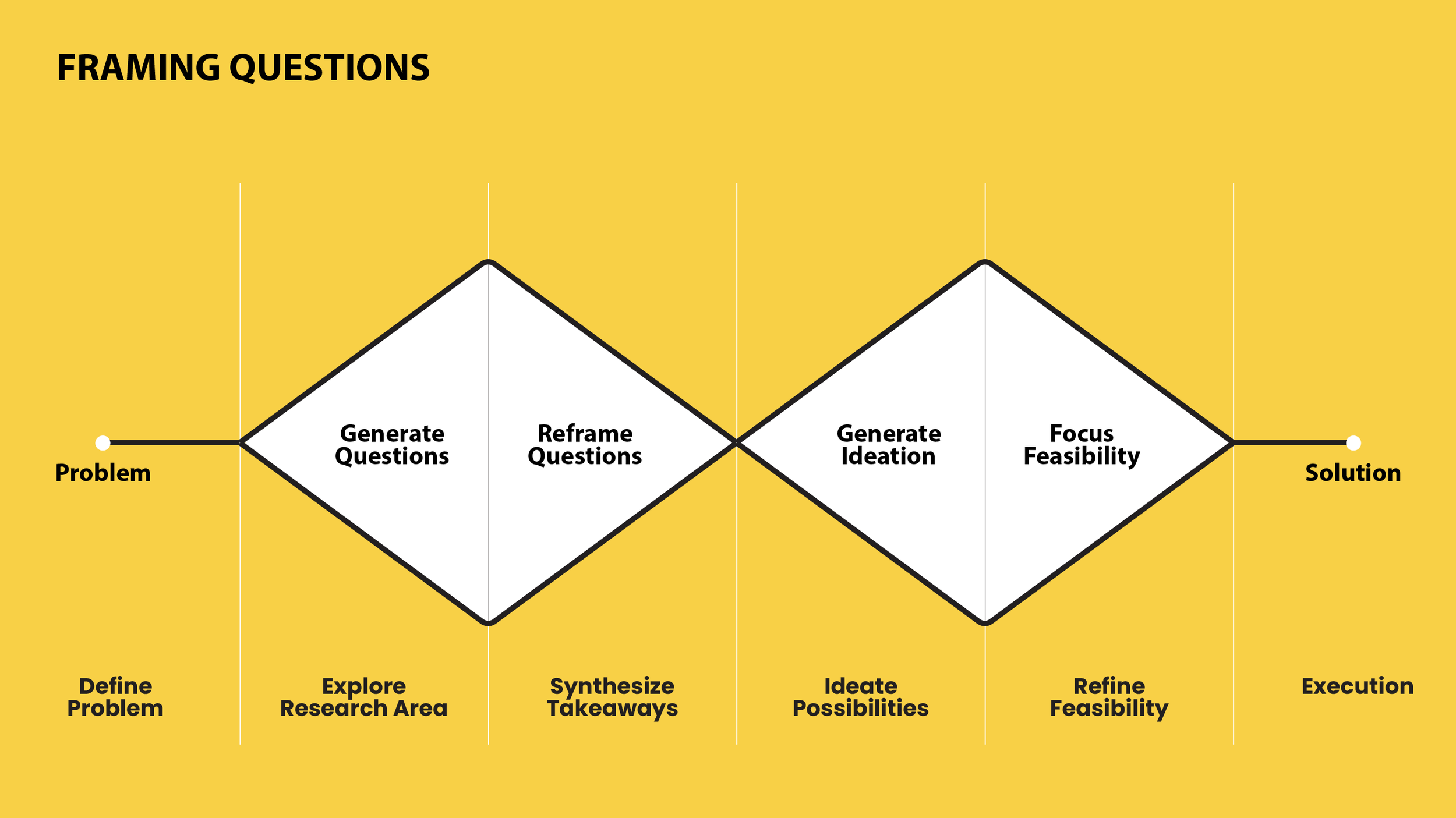01
PROBLEM
SOLVING
STRUCTURE
FRAMING QUESTIONS
"If you can't find the right answer, then your questions are wrong."
There is a saying "If you can't find the right answer, then your question is wrong." In order to come up with the right solution, you need to start with good questions. My first step in approaching any type of solution is framing questions.
Framing Questions is the most essential method for finding creative solutions. By generating questions, I can approach a problem from different perspectives and defining a scope of activities with consideration given time and resources. I learned this skill in graduate school in 2013 and have been honing it as my problem-solving structure.
I think first you have to understand a problem in its contexts and define your definition of the problem. When Einstein approached a problem, he spent most of his time just redefining a problem with his own frame, rather than a given common frame, to understand what the problem is and its circumstances in his words.
Framing Questions is starting at the ideation stage. You can generate questions about anything needed to research, and then prioritize them. Considering that developing a product/service requires a series of iteration processes of diversion and conversion, framing questions is an essential technique for delimiting the scope of activities and deciding where to investigate in a given time and resources.
Framing questions allows me to see things from a new perspective rather than relying on assumptions or given knowledge that may be flawed, like digging into the "why" of a problem.
Framing questions are not ended questions. By identifying insights from the answers to your framing questions, you are able to determine what your next steps are and develop your next questions, so you can expand your right research area and narrow down to a solution.
VALUE-DRIVEN APPROACHES
Framing Questions for Approaching a Problem from Different Perspectives
Framing Questions is a map for ensuring that all team members are on the same page. By working together, the team can generate questions and prioritize them to research. By doing this, we are able to draw a map together and know where we are heading to find a solution. Each of the team members can share their findings to the questions and develop questions to research further.
Framing Questions also enables each team member to bring the right information to their assigned questions, leading to a shared goal and informed decision-making. Overall, Framing Questions is an imperative structure for aligning team members to a common goal.
